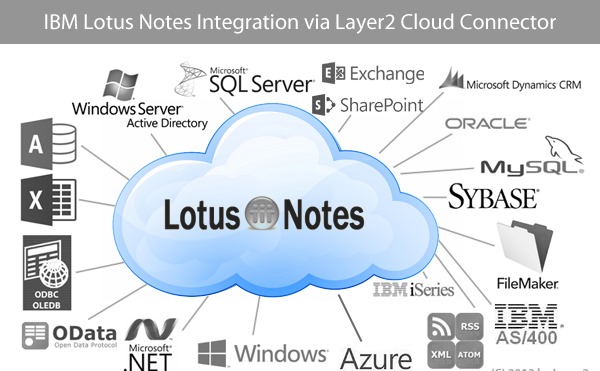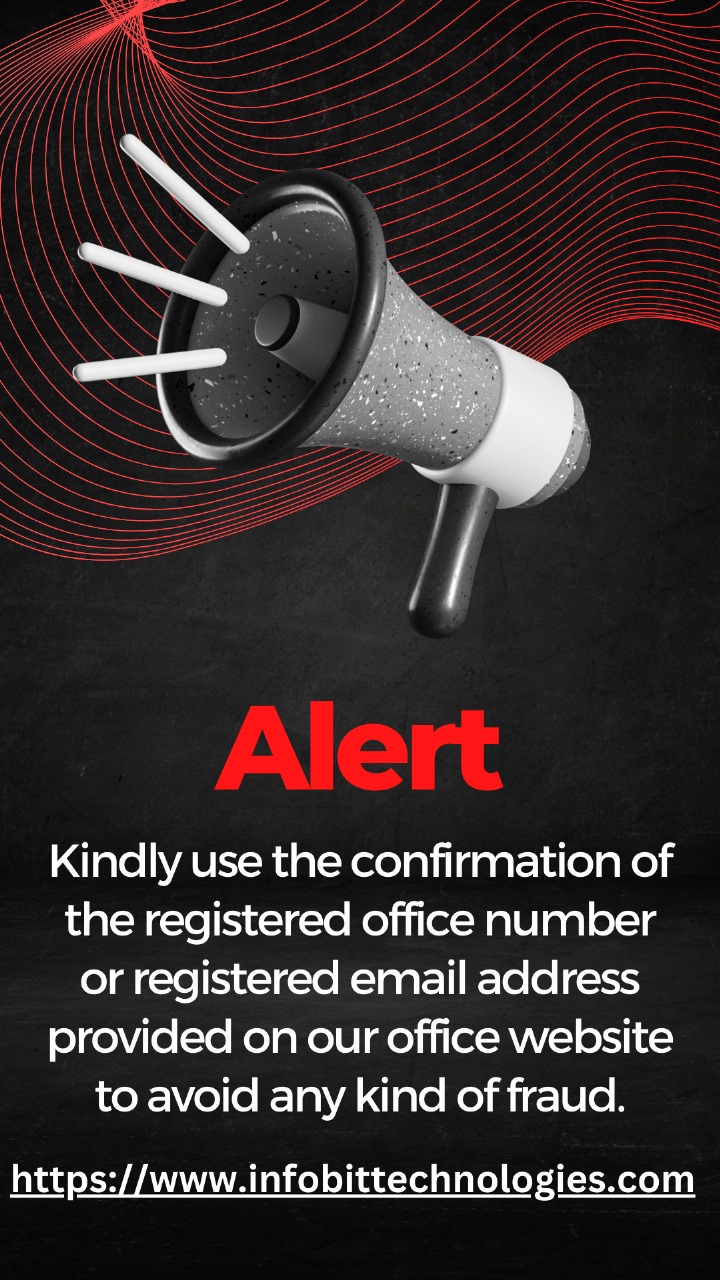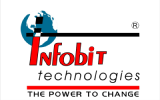
IBM Lotus Domino 8 System Administration Fundamentals
This course introduces you to basic concepts that provide the foundation for IBM Lotus Domino 8.5 and IBM Lotus Notes 8, and it is the point of entry to the entire core system administration curriculum. This course covers the foundational knowledge needed to perform basic administrative tasks in a Lotus Domino 8 infrastructure. This course does not cover how to install, configure, maintain, or troubleshoot a Lotus Domino 8 infrastructure.
Who Should do this Course
You should have previous experience as a network administrator or mail system administrator,and experience using the Lotus Notes 8. client
This is a basic course for current network or mail system administrators who are new to the Lotus Domino 8 system administration, but have some experience using the Lotus Notes 8 client, and who need to acquire a foundational knowledge and working experience with the Lotus Domino 8 administration tools.
Duration : 2 Months
Why INFOBIT :
Infobit Technologies is a leader in the high end Latest technologies IT education industry and ITES . Organizations continue to upgrade, standardize and integrate their systems to develop and sustain their competitive edge.
- Industrial Experienced Faculty
- Microsoft Certified Trainer
- Totally Practical Training into LAB
- JOB Assistance
Exam Code :
Test LOT-847 - IBM Lotus Notes Domino 8 System Administration Operating Fundamentals.
Test LOT-848 - IBM Lotus Notes Domino 8 Building the Infrastructure
Test LOT-849 - IBM Lotus Notes Domino 8 Managing Servers and Users
Test LOT-847: IBM Lotus Notes Domino 8 System Administration Operating Fundamentals
Exam 847: IBM Lotus Notes Domino 8 System Administration Operating Fundamentals Exam Competencies
Exam Type: Multiple Choice
Description: Covers IBM Lotus Notes Domino 8 material as it relates to these competency areas:
Domino and DB2 Integration
Install and Configure
Managing and maintain
Managing Servers
Platform Support
Security
- Domino and DB2 Integration
Configuring Domino to run a DB2 datastore
Enabling a DB2 default user name
Installing the DB2 access server
Understanding DB2 integration enhancements
Understanding Domino and DB2 interaction
- Install and Configure
Configuring client provisioning
Configuring component update for composite applications
Configuring Directory Services
Configuring Directory Services\LDAP services
Configuring Domino services
Configuring Domino Web Access
Configuring Ports
Configuring Server Fast Restart
Configuring User ID Recovery
Creating Internet Site Documents
Creating Policies
Identify the architecture and key components of the Lotus Notes and Lotus Domino environments
Implement Sametime for Domino Web Access (DWA)
Registration\Certifiers
Registration\Domains
Registration\Groups
Registration\Organizational Units
Registration\Organizations
Registration\Servers
Registration\Users
Understanding Installation Package Options
Understanding Server Installation Order (platform independent)
Understanding the Certification Log
Creating Domino (Notes) Named Networks
Creating Mail Topologies
Defining Mail Routing Protocols
Defining supported message formats
Implementing Mail Services\Domino Web Access (DWA)
Implementing Mail Services\IMAP
Implementing Mail Services\POP3
Issuing server commands
Planning Mail Topologies
- Manage and Maintain
Define directory terminology
Examine Lotus Domino server functionality
Manage files and disk space
Monitor server status
Performing Basic Administrative Tasks
Setting administrative preferences
Start Lotus Domino Administrator
Understand Support for new LDAP Attributes
Understanding the Administration Process
Understanding the Domino Administrator UI
Utilizing the Domino Administrator client
View mail routing status
Viewing Person documents and groups
Viewing replication events and topology
Viewing server configuration documents
- Managing servers
Configuring new Domino Domain Monitoring options
Configuring Send to IBM feature
Configuring Web Administration Bookmarks
Implementing new Domino Domain Monitoring probes
Understanding Domino Directory enhancements
Understanding new Domino server console commands
Understanding streaming replication features
Upgrading Domino Servers to version 8
Utilizing new Administration Process (Adminp) features
- Platform Support
Defining Domino attributes
Defining Domino attributes\Certifier Documents
Defining Domino attributes\Configuration Documents
Defining Domino attributes\Connection Documents
Defining Domino attributes\Group Documents
Defining Domino attributes\Messaging
Defining Domino attributes\Person Documents
Defining Domino attributes\Program Documents
Defining Domino attributes\Replication
Defining Domino attributes\Server Documents
Defining Domino attributes\Server Tasks
Identify Lotus Domino databases
- Security
Configuring Administrator Access rights
Configuring the Access Control List (ACL)
Configuring the Access Control List (ACL)\Enforce a Consistent Access Control List
Configuring the Access Control List (ACL)\Maximum Internet name-and-password
Defining Security Fields
Managing encryption key lengths
Restricting Server Access
Understanding changes in database encryption levels
Understanding database Access Control Lists
Understanding new Java Security standards
Understanding Online Certificate Status Protocol (OCSP)
Understanding password protection for Notes and Domino id files
Understanding public and private keys
Understanding the Access Control List (ACL)
Utilizing the Access Control List (ACL) log
Test LOT-848: IBM Lotus Notes Domino 8 Building the Infrastructure
- Install and Configure
Binding ports and Internet Services
Configuring Directory Links
Configuring Directory Services\Directory Catalogs
Configuring Directory Services\LDAP services
Configuring Domain Searching
Configuring Domino Clustering
Configuring Domino Domain Monitoring (DDM)
Configuring Domino Domain Monitoring (DDM) collection hierarchy
Configuring Domino Domain Monitoring (DDM) probes
Configuring Domino Web Servers
Configuring Event Handler Notifications
Configuring network compression
Configuring the Domino Console and binder
Configuring the Room and Resource Manager
Implement database design compression
Implement database on demand collations
Implement database redirection
Implement new agent manager features
Understand Domino Domain Monitoring (DDM) event classes
Understand Domino Domain Monitoring (DDM) probe types
Understand the Server Health Monitor
Understanding authentication-only directory services
Understanding Websphere Portal integration enhancements
Utilizing Response Files for Server Installations
Configure DNS whitelists on the Domino server
Configure private blacklists on the Domino server
Configure private whitelists on the Domino server
Configure public blacklists on the Domino server
Configure public whitelists on the Domino server
Configuring connection error limits
Configuring mail delivery delay reports
Configuring Mail Journaling
Configuring Mail Rule Enhancements
Configuring Mail Tracking
Configuring Message Recall functionality
Configuring outbound SMTP relay authentication
Configuring Reverse Path Settings
Enable/Disable message disclaimers from Domino server
Enabling Message Recall functionality
Enabling TNEF conversion
Expanding Mail Topologies
Setting up message disclaimers
Understanding ambigious name rejections
Understanding Mail Management enhancements
Understanding Message Recall functionality
Understanding new Out of Office service types
- Manage and Maintain
Analyzing server crash files
Configuring Critical Request scheduling
Configuring Domino Domain Monitoring (DDM) probe schedules
Configuring Server Auxiliary Ports
Configuring the Domino Console
Configuring the prevention of incorrect system time changes
Configuring the Server Controller
Configuring transaction logging
Connecting Lotus Domino and Websphere Portal
Integrating Domino and the Tivoli Enterprise Console
Troubleshooting message disclaimers from Domino server
Understanding Advanced Domino Server Tasks
Understanding Directory Assistance enhancements
Understanding Directory Services\Directory Assistance
Understanding Directory Services\Extended Directory Catalogs
Understanding Directory Services\Search Orders
Using Domino Domain Monitoring (DDM)
Utilizing Server Console Commands
Utilizing server serviceability enhancements
Utilizing stronger encryption capabilities
Utilizing Web Administration server bookmarks
- Replication
Building Replication Topologies
Viewing Replication Topologies
- Security
Certificate Authority\Configuring
Certificate Authority\Creating the Database
Certificate Authority\Maintaining
Configuring Message Recall security
Controlling Server Access
Encrypting network traffic
Implementing LTPAToken2 for single sign-on
Implementing stronger key strengths
Integrating Websphere and Domino with tokens
Test LOT-849: IBM Lotus Notes Domino 8 Managing Servers and Users
- Install and Configure
Configuring Automatic Diagnostic Collection
Configuring Automatic Diagnostic Collection for clients
Configuring Automatic Diagnostic Collection for servers
Configuring AutoSave features
Configuring Directory Services\Condensed Directory Catalogs
Configuring roaming users
Configuring Smart Upgrade\kits
Configuring Smart Upgrade\server failover
Configuring Smart Upgrade\Smart Upgrade Governor
Configuring Smart Upgrade\Tracking Reports
Configuring the Fault Analyzer
Configuring the Server Health Monitor
Configuring Transaction Logging
Creating a desktop locking policy
Deploying Productivity Tools to users
Installing Notes clients
Installing Notes clients\multi-user clients
Installing the Notes server client installer
Preventing simple search
Understanding the client Update Manager
Understanding the differences between the Standard and Basic Notes clients
Understanding the provisioning server
Utilizing the client install manifest
Utilizing the client reconfiguration wizard
Configure mail policies settings
Configure private whitelists on the Notes client
Configuring Calendar Cleanup in the Notes client
Configuring Domino Web Access (DWA)
Configuring Inbox Maintenance
Configuring RSS feed enabled mailfiles
Configuring the Out of Office enhancements in the client
Configuring the Out of Office server service
Creating policies\archiving
Enable/Disable message disclaimers from Notes client
Stopping the processing of mail rules
Understanding calendar ghosting
Understanding Mail Threads
- Manage and Maintain
Activity Trends\Analyzing
Activity Trends\Defining
Activity Trends\Implementing
Changing Port Configurations
Configuring policies
Configuring policies\archive policy
Configuring policies\custom password
Configuring policies\desktop locking
Configuring policies\desktop policy
Configuring policies\policy synopsis
Configuring policies\security policy
Deploying policies
Interpret results from Domain Domain Monitoring (DDM) probes
Managing Groups
Recognizing changes to Adminp name reversion requests
Troubleshooting AutoSave functionality
Understanding Web Style Query
Using messaging and calendaring enhancements
Using new server console commands
Using Notes client interface enhancements
Using the Room and Resource Manager
Utilizing Adminp Requests
Utilizing Automated Client Version Reporting
Utilizing custom password policies
Utilizing new File menu options
Utilizing Notes Dynamic Client Configuration
Utilizing Save Window State
Utilizing Smart Upgrade Tracking Reports
- Managing Users and Groups
Configuring home Portal accounts
Configuring new client policies
Deploying Composite Applications
Managing user desktops
Releasing locked out users
Utilizing new mail policy settings
Utilizing the How To Apply policy setting
- Security
Configuring cross certification
Configuring Id file encryption
Configuring ID Recovery
Configuring key rollover
Configuring new Security Policy settings
Configuring password verification for users
Configuring SSL on a server
Configuring the Certificate Authority (CA)
Configuring the Execution Control List (ECL)
Implementing Internet password locking
Implementing Policy controls on signed code
Understanding the Execution Control List (ECL)
Utilizing ID Recovery
Utilizing the Certificate Authority (CA)
Utilizing the Certificate Authority (CA)\Certificate Revocation List (CRL)
Utilizing the Certificate Authority (CA)\Issued Certificate Lists (ICL)

